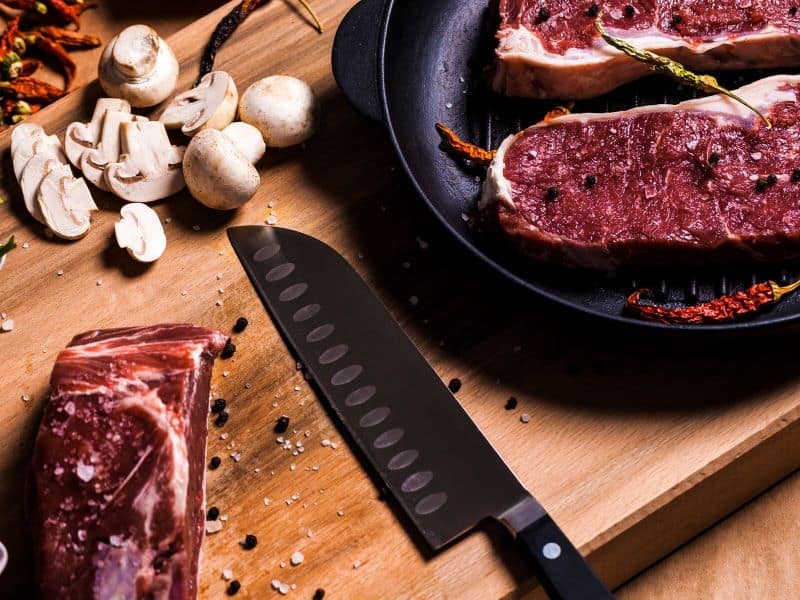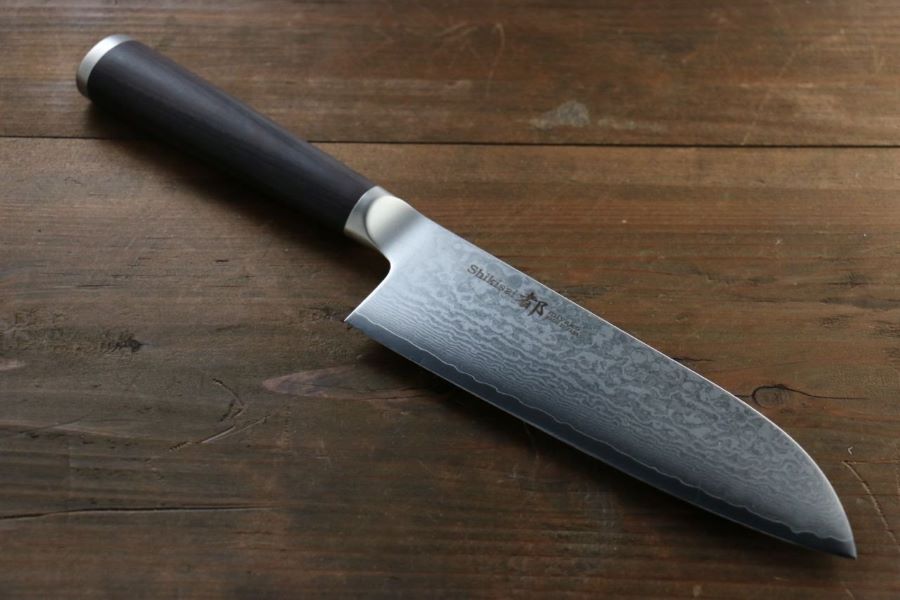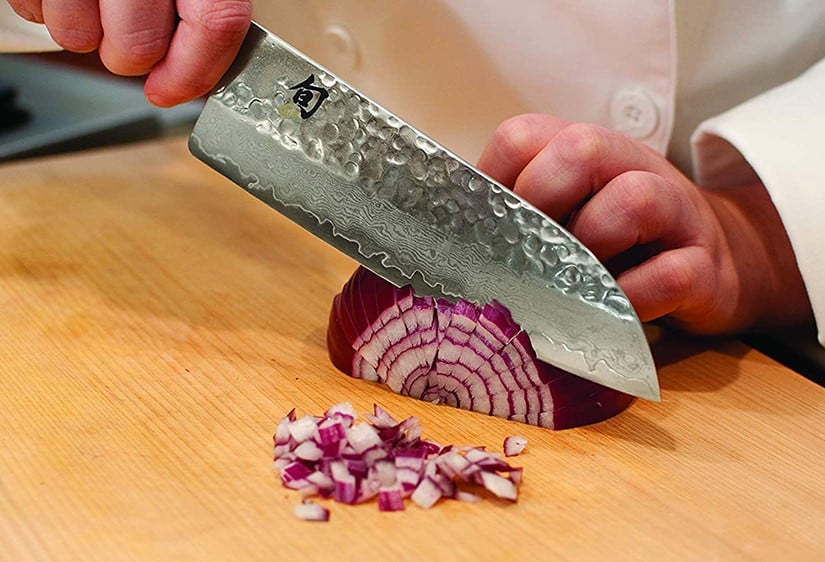Japan
What Is a Japanese Santoku Knife Used For?
Santoku is a Japanese word that means “three virtues “. This explains clearly usefulness of the Japanese Santoku knife. This knife works well for chopping, mincing, and dicing. You can use it to cut vegetables, fish, and meat. People often recommend the Santoku knife as a multi-task kitchen knife.
Many Japanese households use this knife. Because it works well for a lot of cutting activities in the kitchen it is a handy knife. This article has detailed information about the knife and its uses for anyone who desires to satisfy their curiosity about this Japanese knife. Also, keep reading this article to know more about this knife if you are planning to get one for yourself.

> You May Also Want to Read:
- Gyuto Knife – Japanese chef knife. What is a Gyuto knife used for?
- How to Sharpen a Japanese Gyuto Knife?
What is a Japanese Santoku Knife?
The Japanese Santoku knife originates from Japan and it’s a multi-purpose knife used in the kitchen. It handles every kitchen activity that involves chopping, mincing, and dicing in an exemplary way. Nevertheless, avoid using this knife to chop the bones of large meats, to slice bread, and to do any precision kitchen task like peeling.
These knives are very exact when it comes to cutting thin food slices, and this improves the aesthetics of dishes when completed. This knife is more popularly found in households in Japan than Gyuto knives.
The blade of the Santoku knife is a bit taller than that of a similar-sized Gyuto knife or Petty knife. This gives the knuckles of the hand you are using to hold the knife more clearance when you’re cutting directly on top of a chopping or cutting board. Also, the height of the blade provides a good enough surface that allows the knuckles of your hand that isn’t holding the knife to give guidance to the blade when pull cutting, push cutting, and tap chopping.
The Santoku knife is also not as agile as narrower knives. One of the outstanding features of this knife is the curved Kamagata tip which means sickle-shaped when translated. A Petty or Gyuto knife’s tip has a wider tip angle than the Santoku. This relatively reduces the tendency of the Santoku tip to break, but the tip is less precise and nimble.
This knife slices and cuts very efficiently when the blade edge is directly on the chopping or cutting board. Especially as your downward cutting movement comes with a small pull or push, which will help to start the cut.
The Santoku knives are generally available in different blade lengths between 165mm – 180mm. The knife is also available in double bevel edge and single bevel edge.
Features of the Japanese Santoku Knife
- Originates from Japan
- It has a sheepsfoot blade that is wide and has a curved tip.
- Has a really thin blade that makes it suitable for more refined and aesthetic slicing.
- Can be a one-sided (single) or two-sided (double) bevel. Bevel is the surface of the knife that is ground to create the edge of the knife.
- It usually doesn’t have a boister. A boister is the metal piece between a knife’s handle and the blade.
- It has a balanced weight
- Lightweight
- Some may have a granton edge, this is small scallops or divots on a blade that prevents food from getting stuck to it.
- It comes in various sizes from 5″ – 7.9″

What is a Japanese Santoku knife used for?
Mincing and Cutting Meat: The Japanese Santoku knife cut meat well into fine pieces. In addition to cutting, the knife can also mince your meat well. However, we recommend that you avoid using this knife to cut frozen foods and chopping large size meat bones.
Dicing and Slicing Nuts, Fruits, and Vegetables: This all-purpose knife cuts and dices nuts, fruits, and vegetables well. The knife is versatile and easy to use. But for precision tasks like peeling we highly recommend that you make use of another kind of knife like the petit knife.
Slicing and Cutting Fish: This knife also allows you to slice and cut fish into smooth and fine pieces. You can now try cooking lots of fish dishes.
Slicing cheese: You can use this knife to slice your cheese into fine and smooth pieces. It cuts well into the cheese and you can be certain of a sharp, fast and clean cut.
Scooping food off your chopping or cutting board: The Santoku has a wide blade and this makes it possible to use it to scoop food off any cutting platform you’re using.
Creating fine vegetable and seafood slices: A well-skilled chef or anyone who knows how to use a knife to create fine food designs will appreciate the aesthetic values of the Santoku knife. Because it’s super thin it creates fine slices when used to slice vegetables and other food items.
How to use a Japanese Santoku Knife?
When you use a knife the right way, it’s more efficient and safer. The Santoku knife is convenient to use because it is small, thin, and lightweight. It’s also versatile because it cuts many ingredients. But please note that you should change your cutting technique according to the type of food ingredient.
When cutting your ingredients, you can use any of these three cutting methods, pushing the knife with your hand from above, pulling the knife towards you, or moving the knife forth and back.

Conclusion
The Japanese Santoku knife is a multipurpose knife. Both home amateur cooks and professional chefs can make use of it. The height of the knife allows for good clearance for the hand holding it. Also, the somewhat short blade is easy for anyone to carry and use.
This knife isn’t only used by the Japanese; it’s widely used by people all around the world. The efficacy of this knife makes it a knife that can function in any kitchen and can as well be used when making international dishes, intercontinental dishes, or traditional dishes of any culture in the world.
